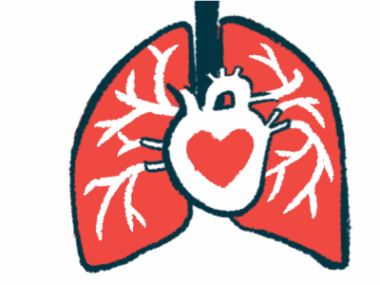PH in Sarcoidosis Tied to Higher Risk of Death on Lung Transplant Waitlist
Worse mortality for women, patients with severe pulmonary hypertension
Written by |

Among sarcoidosis patients referred for lung transplant, the risk of death while on the waitlist is higher for women and those who have severe pulmonary hypertension (PH), or high blood pressure in the lungs, a new study reports.
“Clinicians should be mindful of the increased mortality in [advanced pulmonary sarcoidosis] patients with these characteristics and consider early referral for lung transplantation,” the researchers wrote.
“We found that female gender and severe pulmonary hypertension were significant predictors of waitlist mortality,” the team wrote.
The study, “Predictors of lung transplant waitlist mortality for sarcoidosis,” was published in Respiratory Medicine.
Lung transplant in sarcoidosis
The vast majority of people with this immune system disease experience lung involvement, referred to as pulmonary sarcoidosis. While most pulmonary sarcoidosis patients “remain clinically stable or enter remission with or without immunosuppression, a minority of patients develop advanced pulmonary sarcoidosis (APS) despite optimal pharmacologic intervention,” the researchers wrote.
In these patients, lung disease may become severe enough that a lung transplant is recommended, though the condition’s variability often poses a challenge in making these decisions.
“Unlike in other chronic lung diseases, criteria for lung transplant referral in sarcoidosis is not well-established,” the researchers wrote.
Now, with the aim of identifying predictors of death for sarcoidosis patients while on a lung transplant waitlist, a team of scientists at Temple University, in Philadelphia, analyzed data from the Scientific Registry of Transplant Recipients.
The team’s overarching goal is to improve referral criteria for sarcoidosis patients.
This database includes information for all donors, wait-listed candidates, and transplant recipients in the U.S.
The researchers identified 1,034 people who were put on the waitlist for lung transplant from May 2005 to May 2019 due to advanced pulmonary sarcoidosis. Just over half of these patients were female, and about two-thirds were Black people.
Notably, all of the patients were listed for lung transplant after the implementation of the Lung Allocation Score (LAS), a change in the waitlist protocol that was implemented in 2005 with the aim of better prioritizing lung transplants.
Comparisons against older data — 790 APS patients listed for lung transplant before LAS — showed that, after LAS was implemented, the proportion of patients getting a transplant was significantly higher (68% vs. 39%). In addition, significantly fewer patients died while still on the waitlist after LAS (11% vs. 35%).
“Our results demonstrate that the LAS has improved the efficiency of lung graft allocation for patients with sarcoidosis, and significantly reduced waitlist mortality,” the researchers wrote.
Among the post-LAS patients, 704 (68.1%) received a lung transplant, and 110 (10.6%) died while still on the waiting list. The remaining patients are either still on the waiting list or were removed for other reasons.
“To our knowledge, our study is the first to investigate the pattern of waitlist mortality in a national database of [advanced pulmonary sarcoidosis] patients after LAS implementation,” the researchers wrote.
Compared with those who survived to undergo transplant, significantly more patients who died on the waitlist were women (72% vs. 47.3%) and had severe PH (59.5% vs. 49.2%). Age, exercise capacity, lung function, and body mass index (a ratio of body weight and height) did not differ significantly between the two groups.
Patients who received a lung transplant were, on average, significantly taller and heavier than those who died on the waitlist.
Specifically, transplant recipients were a mean of 170.1 cm tall (about 5’6″) versus 165 cm (about 5’4″). Those receiving a transplant weighed, on average, 75.4 kg (about 166 pounds) versus 70.4 kg (about 155 pounds). Lung transplant recipients also had a taller minimum donor height requirement, based on the candidate’s chest dimensions.
Notably, a larger proportion of Black patients died while waiting for a lung transplant compared with those who ended up getting a transplant (73% vs. 62.2%), but this difference failed to reach statistical significance.
Racial disparities in lung transplant outcomes for patients on the waitlist have been significantly reduced since the implementation of LAS, but access to the waitlist itself may still be a barrier, the team noted.
“Further research and work into these and socioeconomic disparities that remain in the management of APS patients before transplant listing is needed,” the researchers wrote.
In statistical models that accounted for the effects of multiple factors simultaneously, female sex was associated with a more than twofold higher risk of death while on the waitlist, and severe PH was linked to a more than 60% increased risk.
In contrast, taller minimum donor height and blood type B were found to be significant protective factors — both reducing the risk of death while on the waitlist by about 40%.
The increased risk associated with female sex may be because women tend to be shorter than men, and most deceased lung transplant donors are men, according to researchers.
“This likely results in a lower availability of lungs with the require minimum donor height criteria, which may decrease the availability of appropriately sized organs for women,” the team wrote.






